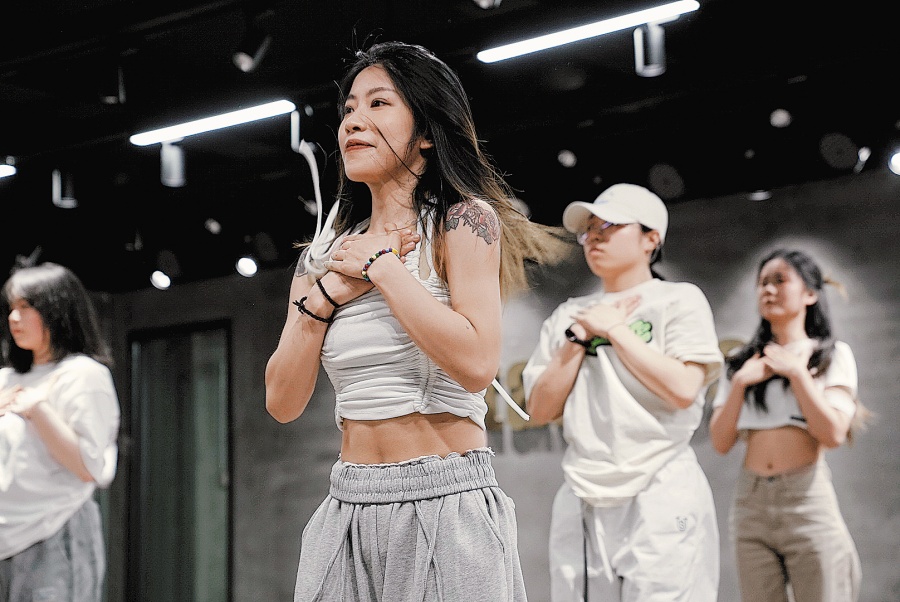

What a feeling
Street dance originated in the United States in the late 1970s and includes a variety of styles, such as breaking, or hip-hop, locking and popping.
In China, street dance has taken root for various reasons, including internet exposure, high-profile celebrity collaborations, and televised competitions, leading to it finding plenty of enthusiasts.
The appeal of street dance has also been boosted by popular shows, such as Street Dance of China, streamed on the video site Youku.
Wu Qiping, 29, is a dance enthusiast who works and lives in Chengdu, Sichuan province. Almost every day, when the clock strikes five, a transformation occurs in the young woman.
The busy office atmosphere gives way to the pulsating beat of music filling a local dance studio where Wu takes dancing classes almost every day after work and also at weekends.
Her introduction to dance was serendipitous. In 2022, Wu and two of her friends from college each paid 20 yuan ($2.80) for a dance class.
"After experiencing significant burnout from work, we were looking for a way to recharge. Though none of us had danced before, we decided to give it a try," said Wu.
The moment she stepped into the studio, the vibrant energy and infectious hip-hop beats enveloped her.
"The first class was very awkward. I was very uncoordinated. We stood at the back of the classroom and found it very challenging to follow the lead of the teacher," recalled Wu, adding that she wore her office outfit to the dance studio, which made her stand out from the other students.
Though her two other friends dropped out of the class, Wu found the experience unlike anything she had encountered before.
At first, she struggled with the choreography; her movements were — stiff and unsure. However, the supportive atmosphere and encouragement from her instructor and peers motivated her to push through her initial discomfort. The dance studio became a place of liberation, allowing her to express herself outside the constraints of work.
As the weeks turned into months, Wu's commitment to dance deepened. With each session, she gained confidence not only in her dancing but also in her overall demeanor. The emotional release she experienced through dance was profound, and it became a form of therapy, allowing her to process the stress and anxiety accumulated from her day job.
As she reflected on her experiences, she recognized that dance had transformed not just her approach to life, but her overall well-being: from her fashion sense to her self-confidence. It became a vital part of her identity — a source of joy, connection, and resilience in an ever-demanding world.